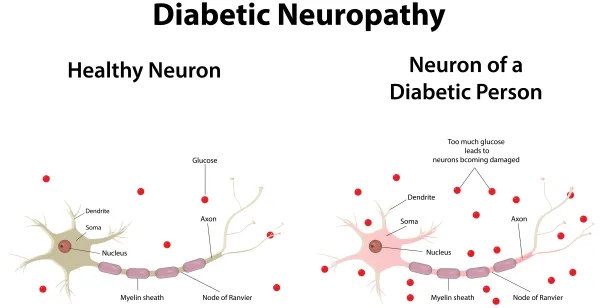Dive Deep Into ICD-10 When Coding for Diabetic Neuropathy

Hint: Key on type of diabetes, complications. Pain management practices will often see patients who need treatment for diabetic neuropathy - nerve disorders that patients with diabetes might be suffering from. You have to be ready with steady ICD-10 knowledge when these patients appear. Explanation: There are quite a few ICD-10 codes for this condition, and you need to be very specific to get the right diagnosis code. Two key steps in coding diabetic neuropathy are: Mark Complications in Fourth Character Slot If there are neurologic complications accompanying the diabetic neuropathy, you'll mark a "4" in the fourth character slot. Distinguish type 1 or type 2 diabetes: As a first step, check in the clinical note for the type of diabetes. Identify the neurological complications: Next, confirm if the diagnosis is for polyneuropathy or other neurological complications. Accordingly, choose from the following code options: In rare cases, your physician may document the diabetes to be associated with a patient's malignancy, Cushing's syndrome, or certain diseases of the pancreas, such as pancreatitis. In that case, you can choose from the following options: Again: Carefully, describe what the neurological complication was. Similarly, for drug or chemical induced diabetes and other specific types of diabetes, such as postpancreatectomy diabetes, you can look at the following; Use These Neurological Complications Characters The fifth characters in the E--.4- subcategory for diabetic neurological complications are: Keep in mind that through September, for auditing, CMS has only considered the accuracy of reporting the family (the first three characters). "Subsequently, we will be responsible for the accuracy of the specific diagnosis within the family to the highest character available," says Gregory Przybylski, MD, director of neurosurgery at the New Jersey Neuroscience Institute, JFK Medical Center in Edison.

